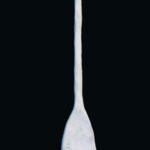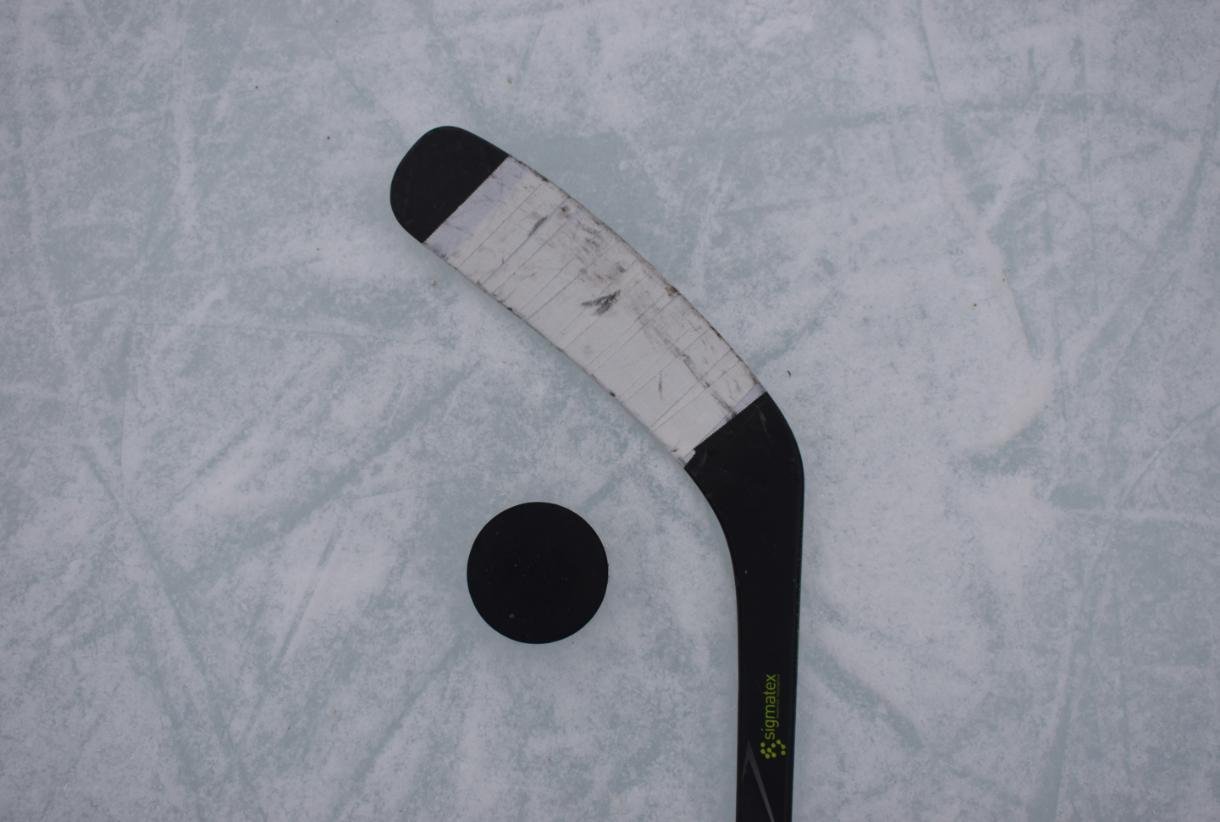Understanding Hockey Stick Flex
Hockey stick flex refers to the degree of bend or stiffness that a stick exhibits when force is applied. It is a fundamental attribute of a hockey stick that significantly influences a player’s shooting accuracy and overall performance on the ice. The flex rating of a hockey stick is determined by measuring how much the stick bends under a specific amount of force, usually measured in pounds. For example, a stick with a flex rating of 85 will bend 1 inch when subjected to an 85-pound force. This measurement is crucial for players, as it directly affects the energy transfer from the player to the puck during the shooting process.
Different flex ratings are available in the market. Commonly, these flex ratings range from 50 to over 100, with lower numbers indicating a more flexible stick and higher numbers corresponding to a stiffer stick. Players should select the flex that best suits their playing style; for instance, those who prefer a quick wrist shot may benefit from a stick with lower flex, allowing for easier loading of the stick during a shot. Conversely, players who rely on powerful slap shots might opt for a stiffer stick, enabling them to achieve greater control and accuracy at higher speeds.
The significance of stick flex extends beyond individual preference; it impacts the overall design and engineering of hockey sticks. Manufacturers incorporate advanced materials and technologies to optimize flex properties, allowing players to better harness their shooting power. Additionally, understanding how flex interacts with other stick characteristics, such as blade angle and length, can provide insights into achieving maximum performance. Ultimately, the correct hockey stick flex plays a vital role in enhancing player performance and ensuring shooting accuracy in competitive situations.
The Physics of Hockey Stick Flex
Understanding the physics behind hockey stick flex is crucial for optimizing shooting performance. When a player takes a shot, they exert force on the stick, which causes it to bend or “flex.” This flexing occurs as the player loads the stick, generating potential energy in the process. The amount of flex depends on both the material properties of the stick and the force applied by the player. A stick with a higher flex rating requires more force to bend, while a lower flex rating allows for easier bending.
During the shooting process, as the player begins to release the loaded stick, the stored energy converts into kinetic energy, propelling the puck forward. The flex of the stick plays a significant role in this energy transfer. When the stick snaps back to its original shape, it not only accelerates the puck but also influences its trajectory. A stick that flexes appropriately maximizes energy transfer, resulting in a faster and more accurate shot.
The angle at which the flex occurs can influence the puck’s elevation and direction. A stick with improper flex for an individual player may lead to less control over the shot, potentially causing the puck to veer off course or not travel at the desired speed. For instance, a player who is taller or stronger may benefit from a stiffer stick, while a smaller player might find that a more flexible stick aids in achieving a better shot. It is important for players to select sticks that match their playing style and physical attributes to enhance shooting accuracy.
In conclusion, the physics of hockey stick flex is a complex interaction of force, energy transfer, and material properties. The correct utilization of flex not only impacts shot velocity but also plays a pivotal role in achieving precise puck trajectories, underscoring the importance of understanding this aspect of hockey equipment for improved performance on the ice.
The Relationship Between Flex and Shot Accuracy
The flex of a hockey stick plays a significant role in determining shot accuracy, as it influences several aspects of shooting dynamics. Stick flex is the measure of how much a stick will bend under pressure; lower flex ratings generally indicate a more supple stick, while higher flex ratings are stiffer. This variation impacts how players are able to execute their shots, particularly in terms of consistency and control. A stick with a lower flex rating can enhance the player’s ability to load the stick effectively, allowing for greater energy transfer during shooting. This resistance can lead to improved accuracy as the player can better control the angle and force of their shots.
Moreover, control is of utmost importance for any hockey player. A flexible stick allows players to maintain better puck handling, enabling sharper and more precise shooting mechanics. For instance, players who utilize wrist shots may benefit from a stick with more flex, as the added bend can assist in snapping the puck off the blade quicker. Conversely, power shooters who favor slap shots may prefer a stiffer stick for enhanced stability during their shots, leading to improved accuracy from longer distances.
Rebound effects also play a crucial role in shot accuracy. When a stick has the appropriate amount of flex, it can effectively absorb the shock upon impact with the puck. This absorption leads to a more predictable trajectory, which is essential for accuracy, particularly during quick shots or in tight situations. For example, a player using a stick with a flex rating that is too high may struggle with over-compensating, resulting in inaccurate or uncontrolled shots. In conclusion, understanding the relationship between stick flex and shot accuracy allows players to make informed decisions about their equipment, ultimately enhancing their performance on the ice.
Player Preference and Flex Selection
The selection of the right hockey stick flex heavily depends on individual player preferences, which play a crucial role in determining shooting accuracy. Professional players often exhibit distinct variations in their stick preferences based on personal characteristics such as height, strength, and specific playing style. These factors directly influence the choice of stick flex, as different flex ratings can significantly alter performance during gameplay.
For instance, a taller player may opt for a stiffer stick flex because their longer lever arms allow for greater leverage and power in their shots. Conversely, shorter players might choose a more flexible stick to enhance their shooting ability, compensating for a shorter reach and generating quick wrist shots and snap shots. In addition, players with greater upper body strength typically favor stiffer sticks, allowing them to capitalize on their power in slap shots and one-timers. Therefore, understanding how strength influences flex selection is vital for improving shooting techniques and achieving the desired precision.
Moreover, playing style also significantly dictates the choice of stick flex. Players who are predominantly playmakers might lean towards a lower flex number, enabling them to execute agile stickhandling and precise passes. In contrast, goal scorers usually prefer higher flex options to maximize shot power. Ultimately, the correlation between a player’s flex selection and their shooting precision cannot be overstated; the right choice enhances not only the individual’s gameplay but also their overall performance on the ice.
As preferences vary widely among players, experimenting with different flexes can help athletes discover what best complements their unique style. Finding the optimal flex ultimately leads to improved shooting accuracy and consistency, which are essential elements for success in competitive hockey environments.
Testing Flex: Real-World Examples
The influence of hockey stick flex on shooting accuracy has been a subject of interest for both players and researchers alike. Various studies have been conducted to assess how different flex levels can affect shot precision and overall performance. A notable study involved a group of amateur players who underwent shooting assessments with sticks featuring differing flex ratings. Results indicated that players who used sticks matched to their flex preferences reported improved shot accuracy, particularly in wrist shots and snap shots.
One player, Jordan, a forward on a semi-professional team, shared his experience when switching from a stiffer stick to one with lower flex. “I noticed a significant difference in how I could snap the puck.” Jordan stated that this change allowed him to generate more power and accuracy. His shooting percentage increased notably, emphasizing the importance of selecting the right flex. In contrast, another player, Mark, who preferred a stiffer flex for slap shots, noted that while he maintained power, he struggled with control. This divergence highlights individual variances in shooting styles and preferences.
Additional case studies have supported these claims, revealing that youth players also benefit from tailored stick flex. Coaches reported enhanced performance when players utilized sticks suited to their size and strength. In assessments, youngsters fitted with appropriate flex levels showcased improved shooting precision during practice drills, emphasizing the role of flex in skill development.
These examples underline the significance of selecting the right hockey stick flex, as it can dramatically impact shooting accuracy. Players are encouraged to experiment with different flex ratings to find the one that complements their shooting technique, emphasizing that optimal performance often stems from personalizing equipment choices.
Common Misconceptions About Hockey Stick Flex
Hockey stick flex is an essential aspect of a player’s equipment, significantly influencing shooting accuracy and performance. Despite its importance, several misconceptions persist regarding stick flex, notably the belief that a stiffer stick consistently leads to more accurate shots. This notion is grounded in the idea that a rigid stick will provide more energy transfer during a shot, thereby enhancing precision. However, this is not universally true and requires a more nuanced understanding.
Firstly, the effectiveness of a stick’s flex hinges on the player’s shooting style, strength, and skill level. A stiffer stick may indeed benefit stronger players who can exert sufficient force to utilize its rigidity effectively. However, for those with less upper body strength or different shooting techniques, a more flexible stick can lead to better accuracy. This flexibility allows for a greater loading effect during the shot, generating a more controlled release and improved wrist action, which can enhance precision in various shooting situations.
Moreover, scientific studies into the physics of hockey shooting illustrate that optimal flex depends on the relationship between the player’s mechanics and the stick’s design. The argument that stiffer sticks are superior is often anecdotal rather than evidence-based. Many professional players have achieved remarkable accuracy using sticks with varying flex ratings, demonstrating that individual preference and adaptability play a significant role.
Additionally, another common myth is that the flex rating, particularly when selecting a new stick, dictates shot accuracy completely. While it is a vital factor, other elements such as blade curve, stick length, and player technique are equally crucial. Therefore, it is essential for players to prioritize their unique needs and skills when selecting a hockey stick, rather than adhering to generalized assumptions about flex and its impact on shooting accuracy.
Tips for Choosing the Right Flex
Selecting the appropriate hockey stick flex is crucial for optimizing shooting accuracy and overall performance on the ice. When considering flex options, players should first evaluate their skill level. Beginners often benefit from a more flexible stick, as it can enhance puck control and aid in developing shooting techniques. Conversely, advanced players might prefer stiffer sticks that offer more power and precision when executing shots.
Position on the ice also plays a significant role in determining the right flex. Forwards, who often engage in quick wrist and snap shots, may gravitate towards a medium flex that strikes a balance between power and control. Defensemen, however, typically require a stiffer flex to support powerful slap shots and accurate passes from the blue line. Understanding the unique demands of each position can help players make informed decisions when selecting their sticks.
Additionally, individual playing styles can influence flex preferences. Players who rely on finesse and quick stickhandling might prefer a softer stick that allows for more whip during shots. On the other hand, those who focus on hard, powerful shots may benefit from a stiffer flex, which provides the necessary energy transfer during shooting motions. It is also advisable for players to test different flexes before making a purchase. Many retailers offer demonstration sticks or allow players to take samples for on-ice testing. This experience enables players to gain firsthand knowledge of how various flex options affect their shooting accuracy and comfort.
Ultimately, selecting the right flex is a personal decision, and several factors should guide this choice. Through careful consideration of skill level, playing position, and style, players can find a hockey stick that significantly enhances their performance on the ice.
Adjusting to Flex Changes
When hockey players transition to a new stick flex, they encounter unique challenges that can significantly impact their shooting accuracy and overall performance. Adapting to the changes in stick behavior requires time, practice, and an understanding of how these adjustments affect shot mechanics. The flex of a hockey stick affects how it bends during a shot, which influences both the power generated and the precision of the shot. Players must engage in specific practice techniques to enhance their shooting skills with a new stick flex.
One effective method for players to acclimate to a different flex is to focus on their shooting technique. Players should practice shooting from various angles and distances to become accustomed to how the stick behaves. During these sessions, it can be beneficial to experiment with the distribution of weight in their shots. A player might find that they need to adjust their weight transfer and follow-through to optimize the energy transfer through the stick, ultimately resulting in better shot accuracy.
Incorporating low-pressure, repetitive drills into practice can also aid players in adjusting to a new stick flex. For instance, using stationary targets allows players to focus entirely on their technique without the distraction of game scenarios. As players become more comfortable with their new stick flex, they can gradually increase the intensity of their drills by challenging themselves with moving targets or timed shots. Additionally, working on receiving passes and quickly transitioning to a shot can further refine their abilities with the new flex.
Receiving feedback, either from a coach or by reviewing video footage of their shots, can provide players with valuable insights. Observing their form and shot placement will help players identify areas that require adjustment, ensuring that they maximize their shooting accuracy while adapting to the new stick behavior. With diligent practice and a focus on technique, players can successfully adjust to changes in stick flex, enhancing both their shot power and overall performance on the ice.
Future Trends in Hockey Stick Design
The evolution of hockey stick technology has been marked by continuous innovation aimed at enhancing players’ performance on the ice. As we look ahead, several trends are emerging in the design and materials used in hockey sticks that may significantly impact flexibility and shooting accuracy.
One of the most promising areas of development involves the use of advanced composite materials. Manufacturers are increasingly experimenting with carbon fiber, Kevlar, and even bio-based materials that offer a unique combination of lightness and durability. These new materials not only reduce overall stick weight but also provide enhanced flex properties. With the adoption of materials that can be engineered at a molecular level, players may experience sticks that not only flex more intuitively based on shooting technique but also return to their original shape more effectively, ultimately improving accuracy.
Another exciting trend is the integration of smart technology into hockey sticks. Innovations such as sensors that can measure flex, shot speed, and shooting angles in real-time could provide players with feedback on their performance. By analyzing this data, players can make informed adjustments to their shooting techniques, leading to greater precision. Moreover, as players increasingly adopt personalized stick models tailored to their specific playing style and physique, the potential for enhanced accuracy through customized flex profiles will only grow.
In addition to materials and technology, the design of hockey sticks is evolving to become more player-centric. Ergonomics and player feedback are driving changes in stick shape and curvature, which may further influence how flex interacts with shooting technique. As a result, sticks will not only be lighter and stronger but may also align more closely with the individual specifications of hockey players, thus enhancing their overall accuracy on the ice.






